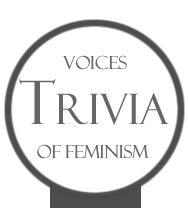What is Goddess? Towards an ontology of women giving birth…
Nané Ariadne Jordan
Oh great lineage holders, ancestors,
mothers of divine wisdom of female embodiment,
those that have come before me,
those that are with me still,
those that carry so I may carry,
may I carry so others may carry,
may we remember,
and re-member,
holding with each generation,
this thread,
this sacred thread,
this sacred red thread,
this sacred red thread lineage,
of what is called feminism,
of what is called birth,
of what is called goddess.
I've been coming to a realization in this last year, it’s this:
I study goddess.
My scholarship is dedicated in heart and soul to goddess as mother, to her multiple forms, but especially to her expression as birth. Goddess in the context of my life is not a distinct entity or thing, or even one story of her incarnation. I follow a process-based, living inquiry into her forms. Goddess feminist Carol Christ writes of goddess as embodied, embedded, and the interconnected, relational ground of being in a way of life that is meant to be enjoyed and deeply felt (2003). Re-imaging the divine as female is not simply a philosophical process, but is rooted in the symbolic as lived through ritual, meditation, images, icons, song and dance (Christ, 2003). I have followed such a trail of goddess in thought, image and living forms, and she has followed me – more at times than I was consciously aware. We have followed each other.
Goddess has made herself especially known to me as I have re-imagined birth through the revival of lay midwifery in North America. This essay is entitled “towards” because it is towards an ontology of women giving birth that I have been moving all of my life. Ontology is defined as the study of being. I see birth as a deep expression of this goddess ground of being, bringing each person into a moment of time through our mother’s bodies and souls, where love is the flowering of birth’s potent ecstasy.
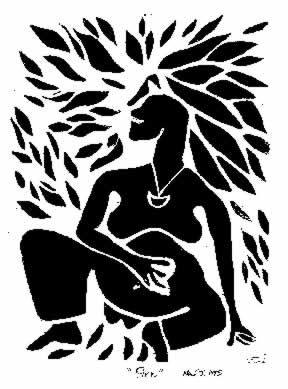
Fire, original block print, © Nané Jordan
I am some kind of post-modern birth thea-login - after Naomi Goldenberg’s use of the term thealogy (1979), thea meaning “goddess” and logy “to study.” Thealogy is: the study of goddess. As a young woman, I was immersed in practice, someone who did things in the world with others, in community, in birth and lay midwifery activism. Given a patriarchal philosophical distinction between theory and practice, my approach to theoria has been informed by midwifery, by the birth of my children, by completing an MA degree in women’s spirituality at New College of California, and now by pursuing doctoral studies in education. In my study of goddess, theory and praxis twist into one thing. Goddess dazzles me in her splendid array of experience. I cannot know theory as distinct from life itself, the flesh and body through which I come to knowing in my being.
I have carried a fascination with my given middle name Ariadne since girlhood. My mother chose it because of her love of the mythical Greek character who offers thread to those in need of way-finding through the labyrinth. Over time, I learned of Ariadne’s ancient priestess lineage; she was an archetypal priestess to the Minoan, Cretan labyrinth and its womb-like birth / life /death path of inquiry (Mountainwater, 1991). I began to feel I wanted to be a priestess myself. How does one accomplish such a task? I now understand a priestess to be a woman who may serve some form of goddess, who is deeply powerful and female in a spiritual and social justice sense of that power, and who works in community, caring for and with others. She attends to social and ritual practices in the name of the goddess she serves.
As a teenager I attended a home birth with lay midwives. This birth awoke what felt like an ancient, yet fully present and grounded place in my being; I was compelled by the simplicity, power, and direct, unmitigated energetic quality of the experience of being there. I had nothing to compare it to. For me, it became simply how birth was, is, can be. As a teenager, I understood little of birth politics, or of the reality of medical interventions, the fear and hospital trauma many women in North America were at that time undergoing as they gave birth. Here was a woman having a baby in her own home: pacing, emoting, moaning, being able to fall into that intense, overwhelming primal abyss which is birth, surrounded by those she loved and two capable midwives, wise women from her community. Then the worked-for relief, wet warmth and joy of this new baby’s arrival, held by his mother and surrounded by family, complete.
This experience quickly became the ground of my desire to become a midwife; I would not at the time have connected it to the idea of becoming a priestess. It was the '80s and all across North America women were reclaiming birth from an overly paternalistic medical system. Pubic shaving, episiotomy, forceps, lying-on-back position, bondage of arms and feet, rising cesarean section rates, and sensation-dulling drugs had become the norm in medical hospital birth practices (Arms, 1996; Cohen, 1983). In the intensity of my desire to be a midwife, I had unwittingly become heir to the North American lay midwifery movement started by women of my mother’s generation in the '70s (Gaskin, 1990). The '80s and ‘90s were still days of pre-legal Canadian midwifery; there were no midwifery schools as such. I sought out home birth midwives to study with, learning from women in Ontario and later in Vancouver, British Columbia.
Related to this idea of priestessing and my birth work, as a young adult I hungrily read into the field of women’s spirituality and ecofeminism, which opened a lot of interior doors for me (Diamond & Orienstein, 1990; Gadon, 1989; Griffin, 1980; Mies & Shiva, 1993; Razak, 1990). I did not find these books in my undergraduate course work of the late 1980s, but gleaned them from the shelves of the Ottawa Women’s bookstore. Feminist texts met the longing I was pursuing in my life for social and ecological justice, and what I could barely then name as a desire for a spiritual praxis grounded in post-patriarchal female-ness, attuned to earth-based and earth-centred ways of knowing. What I could name was that “nature” was integral to my own sense of being and spirituality, my own sense of relaxing into my-self. Ecofeminism answered my intuitions about the patriarchal link between women’s oppression, colonialism, the depreciation of female generative processes, and devastation of the earth’s ecological and living systems.
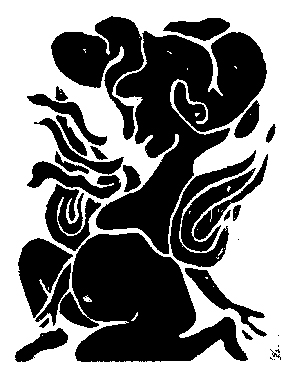
Air, original block print, © Nané Jordan
I also discovered Marija Gimbutas’ then newly-published Language of the Goddess (1991). I drank in page after page of her image- filled text of ancient and Neolithic female iconography, animal figures, plants and symbolic motifs, which re-inscribed traces of cellular, ancestral knowing into my being. The political and spiritual influences of ecofeminism combined with the figurines unearthed and described by Gimbutas drew me towards what was to become the emerging academic fields of women’s spirituality and goddess studies. This was my early intellectual journey, deeply combined with an inner, yearning spiritual voice. I was drawn in a sensory way to theories, stories and practices that opened and touched my thinking and my heart.
I was continuing to pursue midwifery work, and had just given birth to my first child when midwifery in B.C. was regulated. Between the demands of new motherhood, polarization within the midwifery community, and my need for formal midwifery education, which did not exist locally at the time, I was unable to see my way into registering as a professional midwife just yet. Instead, I followed my spiritual yearning, and entered a graduate degree program in Women’s Spirituality in San Francisco. Practices of women’s spirituality were not new to me, though the ability to pursue them through an academic and scholarly frame was. When I first moved to Vancouver to study midwifery in a study group run by a local midwife, she taught us a women’s blessing ceremony for a woman about to give birth. Versions of this ceremony were handed from lay midwife to midwife all along the West Coast. As a group of young women studying midwifery, our connections to each other and our ritual activity grew from there. We celebrated and created rituals for the full moon, the turning of seasons, solstices, equinoxes, or marked events in each other’s lives, sharing in the leadership role of holding the circle and guiding the group through songs, activities, dance, meditation, and woman- to- woman sharing.
The women in this group I circled with were becoming herbalists, midwives, artists, dancers, reiki masters and wilderness guides. Poverty was a common feature of our shared paths, as we were barely making ends meet in pursuing these uncommon occupations and callings. Yet we were living our own brand of healing activism. I was attending home and hospital births, doing post-partum care and working as a relief careworker for special needs children and their families. Any time I could, I was immersing myself in wilderness experiences on the Pacific West coast, saturating and expanding my childhood love of place and nature, finding worlds in the deep green forest of coastal cedar trees and douglas fir, rocks, plants and animals. I was entraining and relaxing my mind and body to such things as the gurgle of a clear coastal forest stream as it meets the salty tang of Pacific Ocean water on a sandy beach – ahhhhhhhhh.
Our women’s circle work and our studies were intimately and intuitively related and integral to what we were becoming. We taught and helped each other through this circle work, which held and nursed the personal and political challenges we each faced in our journeys. I had been introduced to Vicki Noble’s female shamanism teaching (1991), which supported my knowing that birthgiving was a deep energetic portal, a doorway into realms of consciousness suppressed within Western culture. I thus opened further to a sense of ancient female lineage that had understood women’s bodies as portals of the divine. I began attending to synchronicities of dreams and trance, images and longings as they arose within my own and other women’s lives beyond patriarchal structures and strictures.
I realize now that this was an extraordinary time of my life. At the time, the women I knew all seemed to be “becoming” something, yet in hindsight I see so clearly that we were manifesting and being this thing that we each sought. We were being midwives, dancers and healers in our lives in the very act of meeting together and healing each other with our presence, our circles and woman- to- woman friendship, and especially by attending each other’s births.
Midwifery and women’s birth stories and experiences, my own included, became the topic of my MA thesis. Lay midwives’ desire for social acceptance and economic remuneration, combined with a consumer advocacy movement of women and families, led to the professionalization of midwifery in Canada in various provinces in the 1990s. There were many questions in birth circles as to how regulation would affect the women-centred practice of midwifery through integration into a medicalized system of care. Alternately, regulation would open the field of midwifery up to transform the system itself, provide mainstream access to midwifery services, and train the next generation of midwives.
I undertook a qualitative, organic inquiry into my own and other women’s birth stories (Jordan, 2002), developing an ecofeminist understanding of birth that situated birth and the social, economic and spiritual forces that affect it within what I understand as a context of birth and earth healing (see also Parvati-Baker, 1996; www.birthkeeper.com). I posited that, given the pervasive North American alienation from both birth and the earth, the reclamation of birth through holistic and caring birth practices magnifies love and a deep sense of embodiment and consciousness that is the female-centred inheritance of this primal moment. Midwifery-based practices contrast with the tendency towards disembodiment in North American medical practices that amplify pain and fear of the birthing mother / baby dyad. Woman-centred care and consciousness takes time, energy and passion, working with the art of conversation and touch, sharing in relational knowledge. At its best, such care is restorative and egalitarian, combining a sense of justice with women’s healing processes so that the woman giving birth and her family are at the centre of this care and decision-making. This kind of care contrasts with, yet could greatly improve, a medical system that has come to value processes of rationality, individualism, hierarchy, male-centred authority and a levelling-off of consciousness into linear, singular forms.
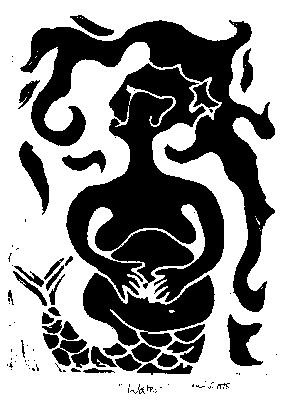
Water, original block print, © Nané Jordan
My claims regarding the culturally, spiritually and ecologically transformative power of woman-centred birth are corroborated through new scientific work on birth physiology and peri-natal psychology. Gentle birth pioneer Michel Odent and his primal health research tracks the “love” hormone oxytocin (2002, 2004), and find it is released during the birth process within the birthing mother. Oxytocin is linked to the mother’s experiences of ecstasy, relief, the release of tears and joy during and upon her baby’s arrival, and to her feelings of bonding. This hormone is inhibited from release under the stressful and adrenaline- filled conditions of many hospital births, resulting in conditions of pain and fear within the mother which block this free flow of love. In such conditions, who can and will guard the ecstasy of birth, the mother and child reunion?
Undertaking my MA in women’s spirituality opened me up to the value of my own practices and experiences in tending birth and working within women-centred communities. How deeply value-able the work I had done was, and the community of women within which I traveled. This valuation and sense of worthiness is important to further develop in the culture I struggled to work within. I faced the day- to-day near constant rejection by the medical profession, negative talk surrounding home birth, and a fear- based mentality of many people in the face of “natural,” woman-centred birth. Along with strengthening this sense of internal value, I started to actually fall in love with particular goddesses at this time. I gave myself to goddess in a way I had not consciously done before. Though I was already hers I began to embrace this understanding, finding and cultivating practices to more fully commune with her. I have had an array of relationships with various female deities, including, most surprisingly to myself given my non-religious upbringing, the Christian figure of Mary. Continuing the inquiry into my middle name Ariadne, I took up a practice of labyrinth- walking in Grace Cathedral during my trips to San Francisco for my studies. The first time there I literally fell on my knees and felt tears streaming down my face in gratitude to this figure of Mary, who now held a version of the labyrinth as her own, one upon which I could walk. I felt a deep, maternal, yet fierce presence within, a comfort and place I could return to when needed. Such experiences have informed my knowing of goddess as both embodied and embedded in living processes.
I have a deep, still unfulfilled yearning to make a pilgrimage to the living goddesses of India, especially the Shakti temples where dismembered parts of the goddess are said to be scattered over the whole land body of India. Shakti can be viewed as the power of goddess, an activating, animating force of life --a power embodied within women themselves. A cadre of American women doing feminist, cross-cultural scholarship on traditions and spiritual practices of women in Hinduism and Tibetan Buddhism, including Miranda Shaw (1994), Dianne Jenett (2005), Janet Chawla (2006) and Laura Amazzone (2001), have deeply influenced my understanding and love of this female-based energetics.
It is hard to find a female-based concept such as Shakti alive within Western spiritual traditions. Shakti could be viewed as an expression of goddess in the female body at the time of birth. I would say its flow / expression and outcome of love is hindered by unnecessary interventions at birth which divert such energy towards fear- based, masculine forms. The use of masculine, rescue-based healing forms such as cutting (Grahn, 1993) can be necessary and useful, yet such procedures are currently used at the cost of women’s autonomy in the birthing process (see Jordan on C-section, 2007), and define the parameters of what feminist thinker Mary Daly called patriarchal medicine (1978). Modern women are largely lost when it comes to giving birth, turning to medical authority figures to be told what to do. Daly pointed to the dangers of this appropriation for women’s personal and collective autonomy.
Birthing bodies resist, disrupt and threaten standard North American modernist investments in linear time, rationality, order, and objectivity. Birth disrupts the Judeo-Christian male image of God, even as He hides the reality of female creation and creativity. I hold that women giving birth act from a focal point of power within their respective cultures and locations, the power to generate and renew human life itself from within the female body. This power is more absolute in its human reality then any other culturally sanctioned act of replication and material production, or social construction. I speculate that how this female power is expressed, denied, or acknowledged by women and within the society around a birthing woman reflects the degree to which women can and may express themselves at large. As each soul makes the journey through her/his mother, re-centring human consciousness within the female-based reality of human birth causes transformation of patriarchal consciousness as a whole.
There is a difficulty in reconciling women’s reproductive and maternal capacities with the history / herstory of the feminist movement itself. Fearful of reducing women to the role of baby makers and family caregivers, many feminists rejected motherhood and its embodied functions as a topic of valid inquiry. Yet maternal experience, its so-called biological basis and social functioning, is in need of attention, activism and scholarship and is coming to the fore of feminist thinking (see O’Reilly, 2006, 2007). As a daughter of the North American feminist movement, my experiences and choices within the realm of motherhood are problematic. I struggle to have the energy to mother my children in a nurturing, attached way, and still function within the larger culture as a worker, thinker and spiritual/spirited being in my own right. It is an impossible task, really. Within goddess and women’s spirituality, I am working and playing to reframe and reclaim my maternal and midwifery experiences and practices.
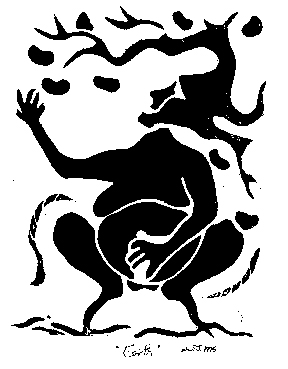
Earth, original block print, © Nané Jordan
My ongoing inquiry into birth through naming the significance of midwifery practices and women’s birth experiences is an ontological quest that pushes the boundaries of current academic knowledge - leaking out, as in the blood and amniotic fluids of birth, new meaning. I acknowledge and value in this quest my own experiences of birthing my children, the moments of intense labour as my first daughter was born, where there was no “pain” as I lay at home in a birthing tub of warm water. My birth sensations rose in succession, and I channelled the intensity of these more-then-physical feelings from deep within my being out through the open palms of my hands. Forming a spontaneous mudra, my hands saluted forces much larger then myself; awash as I was in this mystery of creation. I acknowledge the moments of joy as each of my daughters was born, as I scooped them up from between my legs to my chest and heart, moments of sublime relief and love.
I acknowledge and value my experience of being midwife to pregnant and birthing women, being with newborns covered in white and blood-streaked filaments, being with leaking, engorged breasts of mothers finding their way to feeding small, sucking mouths for the first time. The work of being with birthing women when they are worried, passing liquids and viscous things they want names for, wondering about certain aches in the hips, the belly, the back. The work of massaging bellies and backs, and the wonder that we can grow as round and full as we do. That deep calm, joy and open grace when a baby emerges, the moments of a mother’s embrace of her child, the wide- open, calm eyes of an un-medicated newborn radiating out to the world.
I would say there is a kind of darshan, or blessing, that the mother/baby dyad sends out to the world. As I have experienced it, such blessing is gentle and fierce, immediate, very open, a wide and deep ocean of presence. This presence cannot be recouped if lost through meddlesome interventions or by separating procedures that cut, suck, pull or verbally blast babies from mothers. Such control is a spiritual wounding of women at a time of heightened awareness and power, yet deep vulnerability. As priestess and thea-login of birth, I acknowledge and value these things that have been lost to public naming and knowledge. Staying open to this loss is painful. My resistance to opening to ecstatic, goddess-centred knowledge is like giving birth. How can I surrender in ecstatic embrace, giving birth to what in its emergence is bigger then me, yet in its form is no bigger then my own expression. How far and how wide can I, will I, stretch?
Just as in my birth and midwifery work, I now have sister scholars of the sacred. There is a resonant yet diverse community of women both locally and globally that is reaching for a feminist blend of spirituality and politics, activism, wisdom and sacred earth, whose work sings, rocks, bleeds, blesses, births, heals, in the form of poems, art, text, theory and archaeology. Within this women’s web, I am tracking the spiritual significance inherent in the act of birth as lived and felt through women’s bodies, as felt through moments of pregnancy, birthgiving and emergence. Do we have the names for this? Have we ever talked of such things in depth? What are the ways to meditate not only upon the mystery of death, but upon the moments of human arrival, gushing forth from the female like the ancient ovids, mandaloras, and pubic triangles figured in Gimbutas’ work. I love these round and spiralling forms – where the moon is a mirror of birthing pain and ecstasy. I call forth the goddess of the crowning birthing head of a baby, of the stretching, open vulva, of the placenta, of breast-feeding, of these forms, experiences and stories that shape our lives now, in this time.
Sources
- Amazzone, L. (2001). Embodying the goddess Durgã: A pilgrimage to the mother goddess of paradox. Unpublished Master of Arts thesis. California Institute of Integral Studies.
- Arms, S. (1996). Immaculate deception II: Myth, magic & birth. Berkeley, CA: Celestial Arts.
- Chawla, J. (2006). Ed. Birth and birthgivers: The power behind the shame. New Delhi: Shakti Books Har-Anand Publications.
- Clements, J., Ettling, D., Jenett, D., & Shields, L. (1999). Organic inquiry: If research were sacred. Draft Manuscript © Jennifer Clements.
- Cohen, N. W. (1983). Silent knife: Cesarean prevention & vaginal birth after cesarean (VBAC). Massachusetts: Bergin & Garvey Publishers.
- Daly, M. (1978). Gyn/ecology. The metaethics of radical feminism. Boston: Beacon Press.
- Diamond. I. & Orenstein, G. (1990). Reweaving the world: The emergence of ecofeminism. San Francisco: Sierra Club Books.
- Gadon. E. (1989). The once and future goddess: A symbol for our time. New York: Harper & Row.
- Gaskin, I. M. (1990). Spiritual midwifery, 3rd edition. Summertown, TN: The Book Publishing Company.
- Gimbutas, M. (1991). The language of the goddess. San Francisco: SanFransiscoHarper is this one word? Collins.
- Goldenberg, N. (1979). The changing of the gods: Feminism and the end of traditional religions. Boston: Beacon Press.
- Jenett, D. (2005). A million shaktis rising: Pongala, a women’s festival in Kerala, India. Journal of Feminist Studies in Religion, 21(1), 35-56.
- Jordan, N. (2002). Birthdance, earthdance: The power and passion of women giving birth, a pilgrim’s path to birth. Unpublished Master of Arts thesis. New College of California.
- Jordan, N. (2007). The swallowed mother: C-section, metaforms and male cuts. www.mwtaformia.com.
- Lorde, A. (1984). Sister outsider: Essays and speeches by Audre Lorde. Freedom, CA: The Crossing Press.
- Merchant, C. (1980). The death of nature: Women, ecology and the scientific revolution. San Francisco: HarperSanFrancisco. One word?
- Mies, M. & Shiva, V. (1993). Ecofeminism. London: Zed Books.
- Mountainwater, S. (1991). Ariadne’s thread: A workbook of goddess magic. Freedom, CA: The Crossing Press.
- Noble, V. (1991). Shakti woman: Feeling our fire, healing our world. San Francisco: HarperSanFrancisco.
- O’Reilly, A. (2006). Rocking the cradle: Thoughts on motherhood, feminism and the possibility of empowered mothering. Toronto: Demeter Press.
- O’Reilly, A. (2007). Ed. Maternal theory: Essential readings. Toronto: Demeter Press.
- Odent, M. (2002). The farmer and the obstetrician. London: Free Association.
- Odent, M. (2004). The caesarean. London: Free Association.
- Parvati-Baker, Jeannine. (1996). Shamanic midwifery – Every mother a midwife. International Journal of Prenatal and Perinatal Psychology and Medicine. 8 (1), p. 1-6.
- Razak, A. (1990). Toward a womanist analysis of birth. In I. Diamond & G. F. Orenstein. (Eds.). Reweaving the world: The emergence of ecofeminism (pp.165 – 172). San Francisco: Sierra Club Books.
- Shaw, M. (1994). Passionate enlightenment: Women in Tantric Buddhism. Princeton, NJ: Princeton University Press.
- Spretnak, C. (Ed.). (1982). The politics of women’s spirituality: Essays on the rise of spiritual power within the feminist movement. New York: Anchor Press / Doubleday.
About the author
Nané Ariadne Jordan has a working background in pre-regulation Canadian midwifery that deeply informs her research and writing on themes of midwifery, birth, mothering, women’s spirituality and goddess studies. She is currently a Ph.D. candidate in the Faculty of Education at the University of British Columbia. She completed a BFA in photography from the University of Ottawa, and an MA in Women’s Spirituality from New College of California. She continues to practice art, with a focus in developing ecofeminist ritual performance, art and writing. Her current dissertation study explores the experiences of faculty and student alumni within the Women’s Spirituality MA program. She is working "towards" a philosophy and thealogy of birth within this program. She lives in Vancouver B.C. with her husband and two daughters and loves the trees, the ocean and savoring life with family, friends and scholarly community.
Join our Trivia - Voices of Feminism group on Facebook
